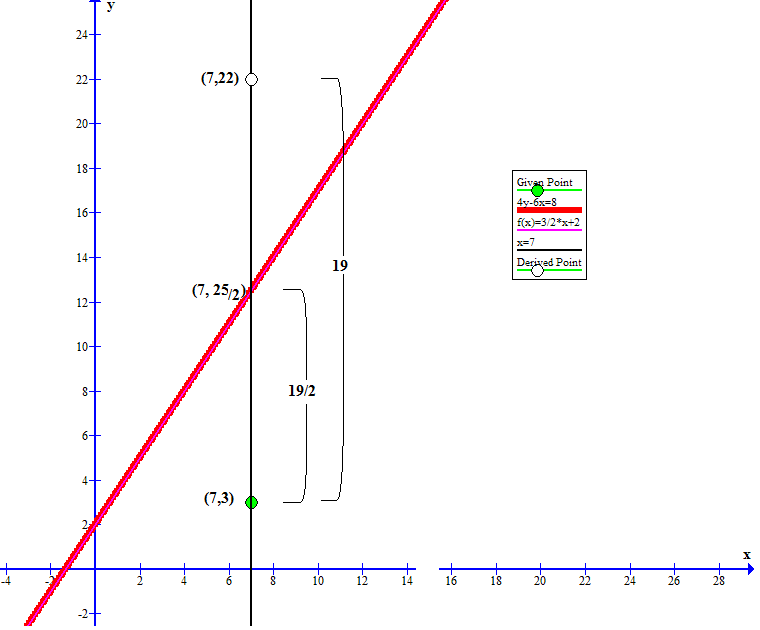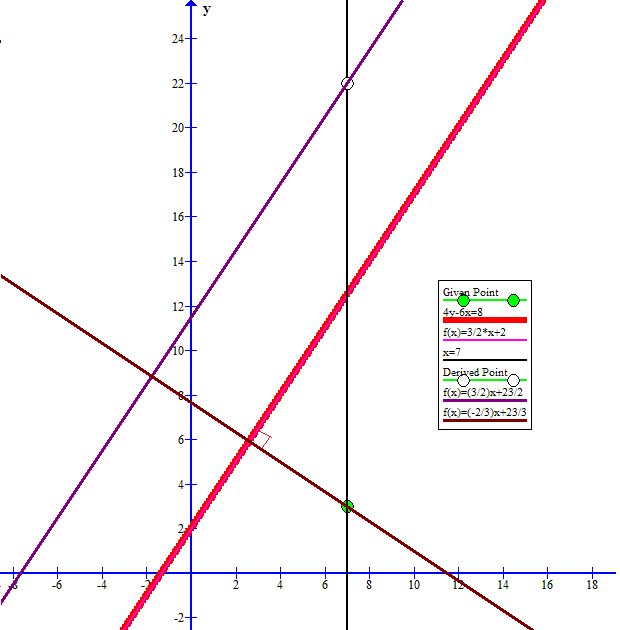A line segment is bisected by a line with the equation # 4 y - 6 x = 8 #. If one end of the line segment is at #( 7 , 3 )#, where is the other end?
1 Answer
Any point on the line
or
if the given line
Explanation:
Apology:
Even omitting some details, this explanation is quite long.
Consider the vertical line
This vertical line will intersect
A point twice as far above
That is the line segment from

Furthermore, as we can see from similar triangles any line parallel to

so any line parallel to it must also have a slope of
and
if such a line passes through
or simplified as
~~~~~~~~~~~~~~~~~~~~~~~~~~~~~~~~~~~~~~~~~~~~~~~~~~~
It is possible, since this question was asked under the heading "Perpendicular Bisectors" that it was intended that
In this case the perpendicular line to
would have a slope of
an equation of

The system of equations:
can be solved for the point of intersection:
